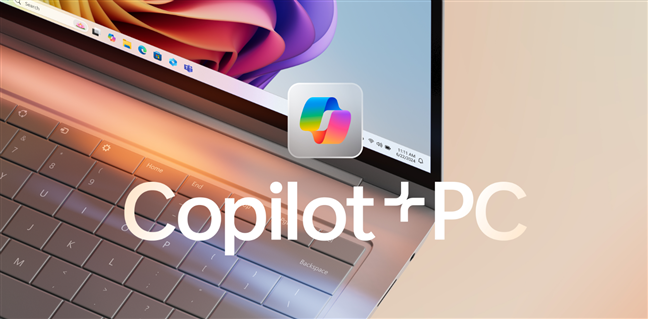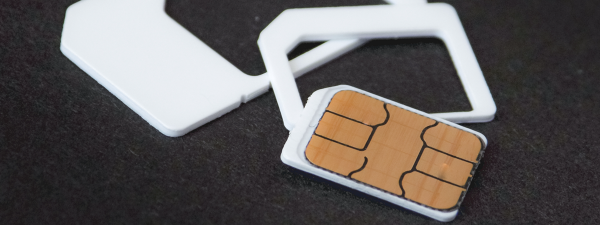
Most people with a good knowledge of technology have heard the term System on a Chip or SoC. It wasn’t much of a thing two to three decades ago, or at least it was not as widely used as it is today. Still, in the present day, the System on a Chip represents an approach to making electronic devices smaller, more powerful, and more energy efficient than ever before. That’s all nice and easy, but do you know what a SoC is? What does System on a Chip mean? Why is it important for smartphones, tablets, wireless routers, wearables, and other mobile devices? If you want to learn more about what System on a Chip means, what SoCs do, and why they’re such a big deal, read this article, and you’ll find some answers:
What is a System on a Chip (SoC)?
A System on a Chip (SoC) is an integrated circuit that encapsulates the necessary components of a computer or electronic system onto a single chip. SoC is the short term for System on a Chip. The first part of the term - System - says it’s all about a complex electronic assembly, while the last part - Chip - tells you that all the system components are squeezed together on a single integrated circuit.

The Snapdragon X Elite System on a Chip
Image source: Qualcomm
To better understand a System on a Chip, imagine it as a full computer miniaturized and compressed to fit on a single chip. An SoC is like a miniature system that includes a processor (CPU), a graphics unit (GPU), a Neural Processing Unit (NPU) for artificial intelligence (AI) workloads, and a Wi-Fi/Bluetooth chip.
What are the common uses of SoCs?
Systems on Chips are widely used in many industries for all kinds of purposes, such as for smartphones, tablets, wearables, digital cameras, wireless routers, and so on. However, their most common uses today are probably for powering smartphones. If you’re wondering why, keep in mind that both smartphones and tablets are small devices that need a lot of processing power to work, and they all need to meet users’ requirements, which are increasingly demanding. Here’s what Qualcomm’s Snapdragon 820 System on a Chip looked like in the old Samsung Galaxy S7 and S7 Edge smartphones:

What a System on a Chip looks like in real life
Image source: Qualcomm
Modern phones are even more complex and have Systems on Chips that are even more miniaturized. For instance, people want to be able to use their smartphones to browse the internet, listen to music, watch videos, use GPS navigation, shoot photos and film videos, play games, be always connected to social networks, and so on. These things need a good processor with fast cores and, more recently, an NPU for AI tasks. That’s not all; they also need a good graphics chip, a fast Wi-Fi and Bluetooth chip, support for connecting to 5G networks, a GPS chip, etc.

An SoC usually includes a CPU, a GPU, an NPU, and many other components
Image source: Qualcomm
Furthermore, everything must happen with the least power consumption possible. After all, nobody wants their devices to shut down after very few hours of use. The answer is to miniaturize everything that can be miniaturized and squeeze as many components as possible on a smaller surface. The consequence is a higher processing power and a lower power consumption. That is exactly what Systems on Chips are offering.
What are the components a System on a Chip must include?
A System on a Chip can have a variety of elements, depending on its purpose. However, as the overwhelming majority of SoCs are used on smartphones, here’s a list of the most common components of such devices:
- CPU: The Central Processing Unit or the processor, is the core of all things inside an SoC. It’s the part of the SoC that’s responsible for making most calculations and decisions. It receives input from other hardware components and software and delivers appropriate output responses. Without a CPU, there would be no SoC. Most CPUs today have eight or more cores inside, to be able to do parallel processing.
- NPU: The Neural Processing Unit is a specialized accelerator for handling artificial intelligence (AI) tasks. Unlike CPUs and GPUs, NPUs are optimized for deep learning algorithms, making them indispensable for efficiently running tasks like natural language processing or image analysis.
- GPU: This stands for the Graphical Processing Unit, also known as the video chip. The GPU is responsible for the 3D games you can play on your smartphone and for the neat visual transitions you see in the user interface of any device using a System on a Chip.
- RAM: All computing devices need memory to work. Data must be used to run apps and software, and a System on a Chip must have RAM.
- ROM: Just as a device needs RAM to run apps and other software, it must also have storage for software like the firmware or the operating system.
- Modem/Wi-Fi/Bluetooth: No smartphone would be smart or a phone if it couldn’t connect to radio networks and devices wirelessly. By that, I’m referring to both 5G and 4G mobile networks, Wi-Fi networks, and Bluetooth connections. Modems/Wi-Fi chips take care of network or cellular connectivity.
Here’s an illustration of some of the components Qualcomm’s Snapdragon 8s Gen 3 System on a Chip includes:

Systems on Chips include many different components
Image source: Qualcomm
Besides a processor and memory, other SoCs, like the ones found on wireless routers and other similar networking devices, might also include PCIe interfaces designed to connect the radio transceivers, SATA, and/or USB interfaces to storage devices.
The list of components that I’ve included in the paragraphs above shows only a few core, must-have elements of a System on a Chip. However, Systems on Chips can have other parts as well. For instance, many have components designed to work with location services, sensors, security, or interfaces capable of dealing with better cameras or larger screens. The list goes on.
Which are the biggest Systems on Chips companies?
The largest Systems on Chips companies today are Qualcomm, Samsung, MediaTek, HUAWEI, NVIDIA, and Broadcom:
- Qualcomm, NVIDIA, and MediaTek manufacture and sell mostly SoCs to other hardware companies that use them in the devices they produce.
- Broadcom makes SoCs that are mainly used in routers and networking devices.
- Samsung and HUAWEI are not only makers of Systems on Chips but also two of the largest smartphone companies in the world.
What’s the best System on a Chip?
To say which is the best System on a Chip is a bit of an impossible task. The industry is growing and evolving so rapidly that, by the time you can compare and decide which is the best SoC, a new one will probably be on its way to power future devices.
However, the Snapdragon Elite X might be the one to deserve this title at the time of writing. When I’m updating this article for 2024, it’s making headlines for its integration into Windows 11 Copilot+ PCs, promising top-notch AI capabilities and extended battery life.

The best SoC today may be the Snapdragon X Elite used by Copilot+ PCs
Image source: Microsoft
Still, the best SoC for you might not have the best processor or the fastest wireless transfers. The System on a Chip for you is the one that can make your next smartphone or device work well, offer all the basics you need, and include all the “peripherals” you want (5G support, Wi-Fi 6 or Wi-Fi 7, Bluetooth LE, etc.).
System on a Chip - advantages
You might still wonder: Why would somebody want to design, manufacture, and sell a System on a Chip? There are quite a few reasons for that:
- An SoC is usually tiny and doesn’t take up much space inside an electronic device, making it a perfect solution for small devices like smartphones, ultrabooks, tablets, or wearables. These examples alone are worth hundreds of billions of dollars.
- When you have to design a device that’s large enough to fit in your palm at best, integration is a thing you want. That means you can put a processor, a graphic chip, a modem, and many other components in the same square inch.
- Because a System on a Chip is small and integrates many different parts on a single chip, its manufacturer doesn’t have to spend time, money, and resources on wiring significant physical parts and creating long circuits, which means lower manufacturing costs.
- Systems on Chips are much more power efficient than systems with dedicated, separate components, like a traditional desktop PC or laptop. An SoC can run on batteries for longer periods, making it a good choice for any mobile device.
The disadvantages of Systems on a Chip (SoCs)
On the other hand, Systems on Chips have the disadvantage of not being adaptable. By their nature, SoCs are so tightly integrated and small that they cannot adapt or, in other words, cannot be upgraded.
A System on a Chip will usually die the same as it was born: nothing changes during its lifetime. And that’s also a reason why if something breaks inside a SoC, you cannot repair or change only that part - you have to replace the whole SoC.
Do you agree that Systems on Chips are the future of electronics?
Traditional approaches to electronics, especially computing devices, were about creating systems that run on separate, independent parts. However, the permanent miniaturization of all things around us means they are relying increasingly on smaller, better, more power efficient Systems on Chips. Smartphones, tablets, wearables, IoT (Internet of Things) devices, and even laptops prove that Systems on Chips are an important part of the future of all electronics. But does that mean that they will be taking over the world? What if they become so small that they make nanorobots a common thing? I want to hear from you, so don’t hesitate to share your opinions in the comments below.


 13.06.2024
13.06.2024 


